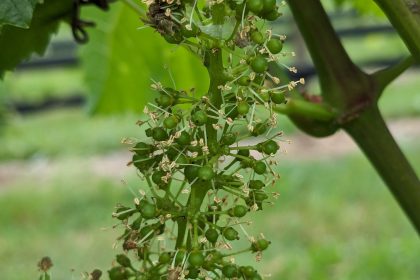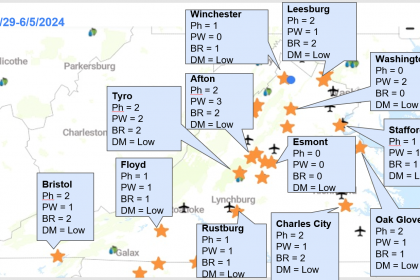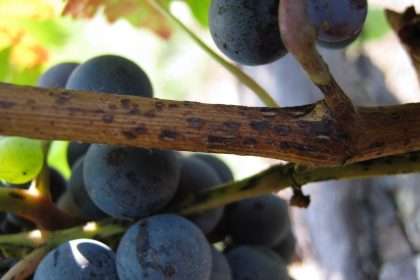A cool and wet Fourth of July weekend resulted in a very long leaf wetness hours. So far, more than 12 hours of wetness has been recorded at Winchester AREC, and at this rate, it will go on over the night (= potentially it will be a longer than 24 hours of wetness event).
As noted in my previous post, the April frost event(s) probably resulted in a prolonged bloom period. Because of that, I have a feeling that some portions of clusters of many of cultivars are still under a critical period for downy mildew, powdery mildew, and black rot for at least one more week.
If your vines were protected with materials such as mancozeb (for downy, and black rot), Revus, Forum, Zampro, Presidio, or Ranman (for downy), Luna Experience, Rally, or other DMI (for black rot) or Abound, Pristine, or other QoI (for black rot), you should not worry too much about it. However, if your vines were not well protected, (e.g., last application was more than 12 days ago, or you have missed some of protective materials in the previous application), then you may need to use a fungicide with a kick-back activity to stop the potential infection which maybe going on right now. For downy mildew, you may use a phosphite (Prophyt, Phostrol, etc), or a Ridomil product. For black rot, you may use a DMI (Rally, tebuconazole), or a QoI (Abound, Pristine, etc). (Note: a DMI works better than a QoI in terms of kick-back activity).
Also, while I am talking about “kick-back” activity, please note that the kick-back or curative activity means that you may stop the on-going infection process 3-5 days after the initiation of infection, and while it is not showing symptoms. It does not work on existing downy or black rot symptoms. In fact, none of fungicides we use truly eradicates existing symptoms. Thus, often time, it is the best to have a good protective program, rather than trying to spray after the fact. Especially during the critical period for cluster infection, which is from bloom to 4-5 weeks after bloom.





